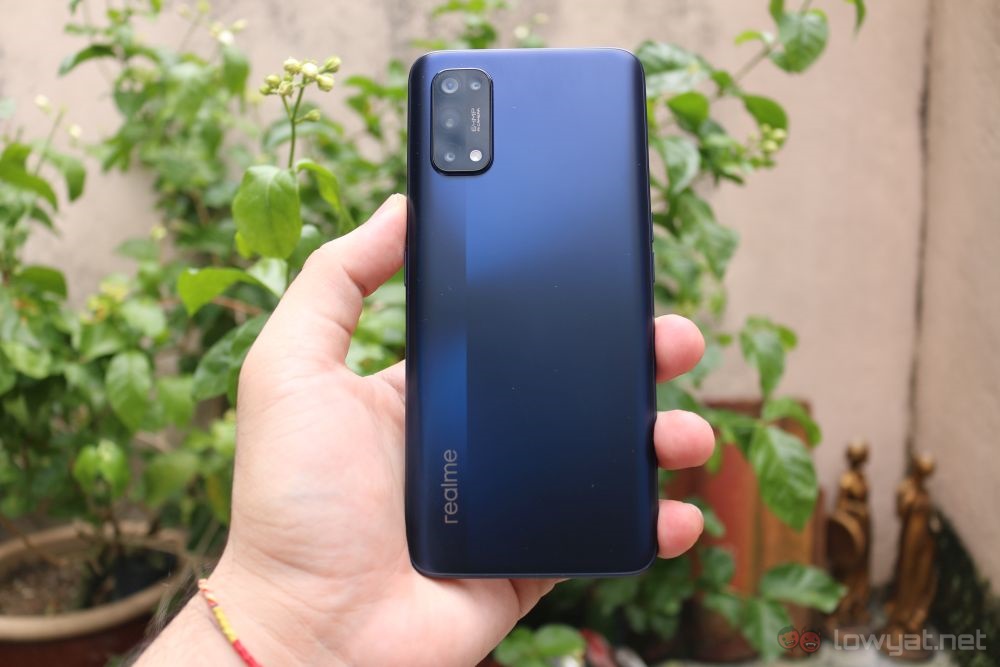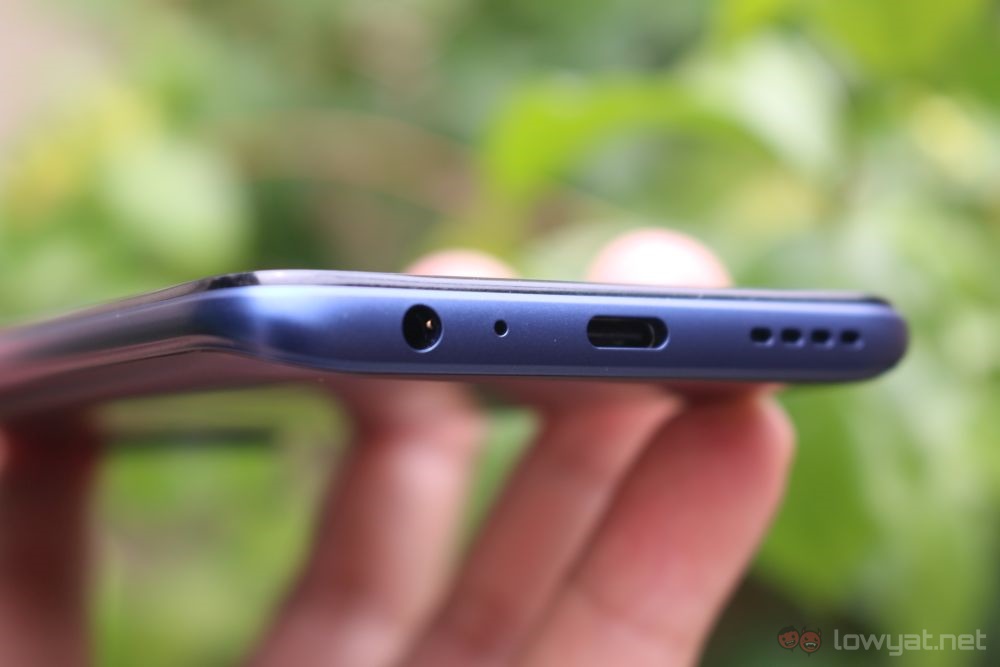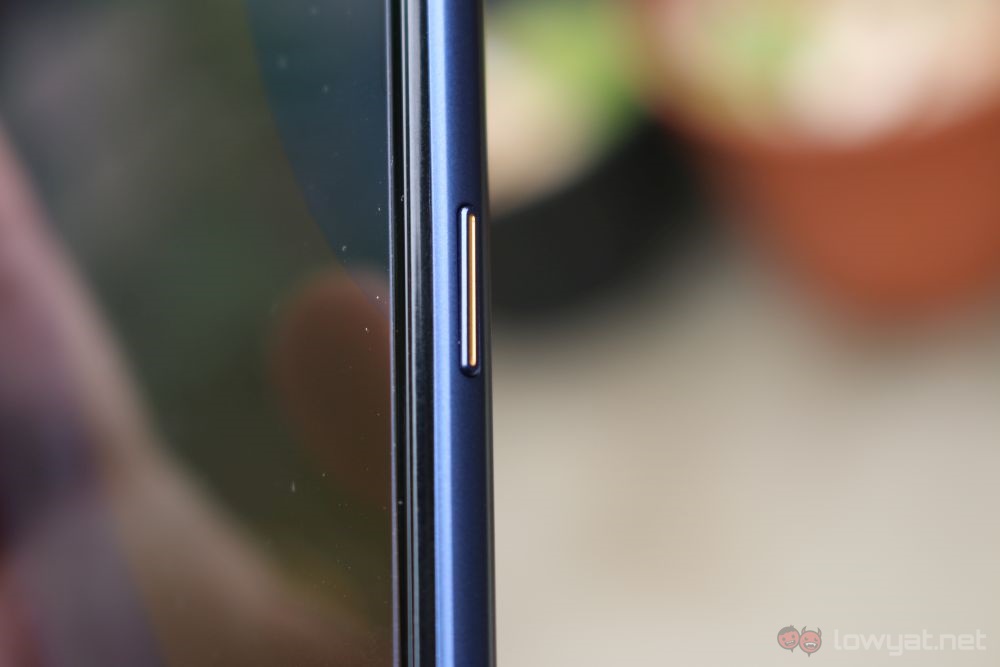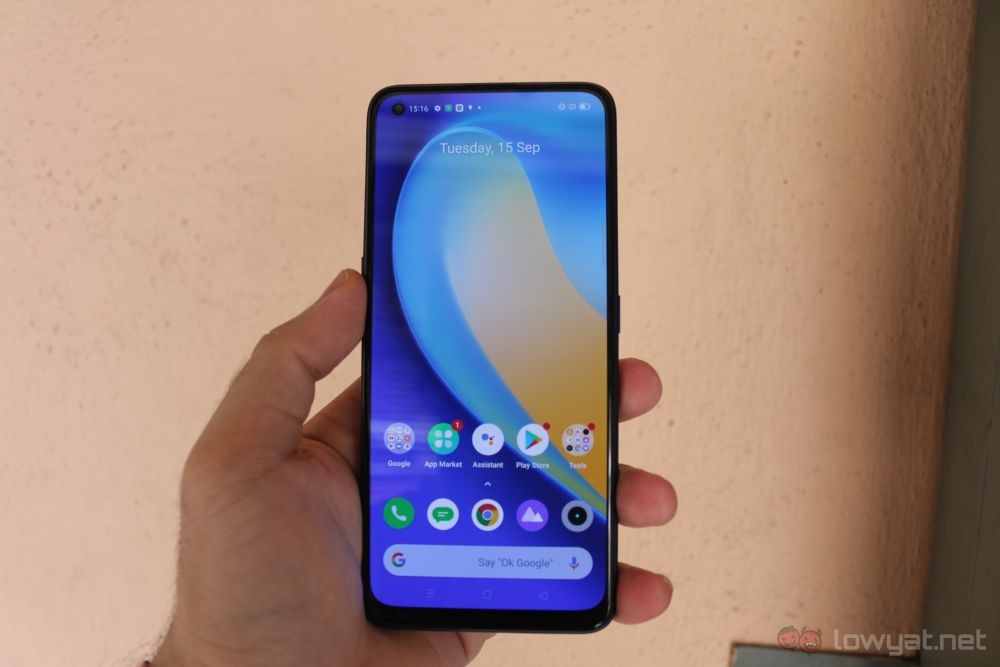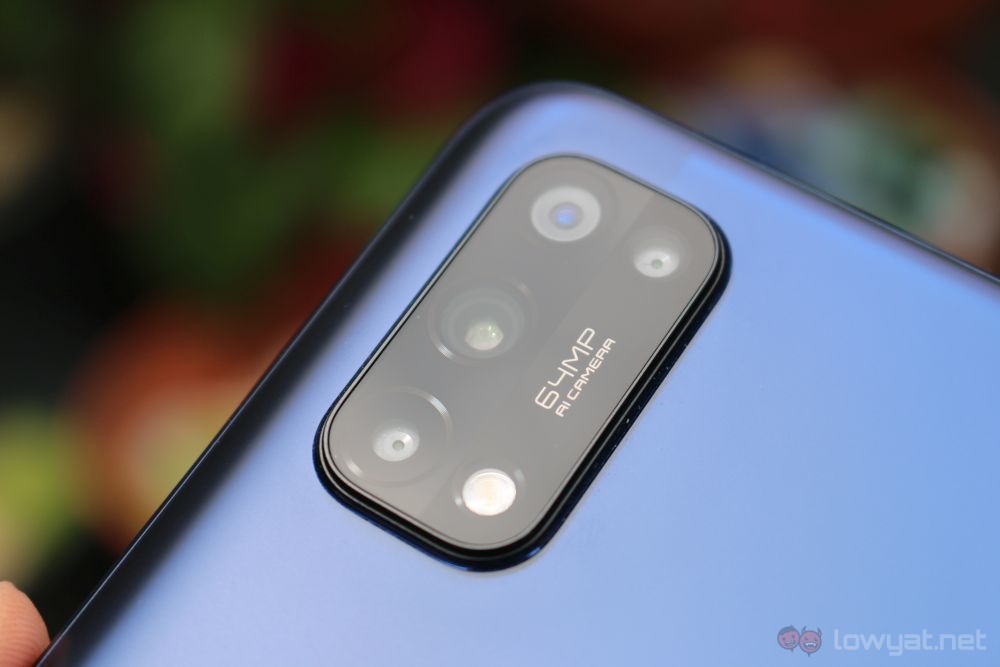Unfortunately, coming so soon after the previous generation realme 6 Pro, it really begs the question: what’s the difference between the two, and is it worth upgrading if you’ve already gotten the previous generation device? After all, there’s barely a half-year gap between the two.
On the outside, things have mostly remained the same, which is a good thing. The company still has a knack of making interesting colour decisions for the phone. And this particular one, called Mirror Blue, is really quite the looker. At least in my eyes. The back is also curved to make for a more comfortable grip. The screen in front is flat, as it usually is with this realme series of phones. But for some reason, there’s quite a thick chin at the bottom of the display. The display itself is a 6.4-inch Full HD screen, with a punch hole cutout at the top left corner. You’ll also notice that there’s one less front-facing camera here compared to the predecessor. Depending on what you look for in a smartphone, this may be a reason to go with the previous model instead of the realme 7 Pro.
Things are pretty uneventful on the sides. The left is where the volume rocker is, with the right side housing the power button. Depending on your personal preference, this may be another minus point for the realme 7 Pro. This is because the power button is not also a fingerprint sensor like it was in the previous generation. But for what it’s worth, the power button here has a slight protrusion, making it more easily identifiable by touch. At the bottom, you have the USB-C charging port, the speaker grille and the 3,5mm audio jack, which is always nice to see.
User experience with the realme 7 Pro is quite alright. The company hasn’t revealed what the screen refresh rate is, but it feels like the usual 60Hz that you get on most phones these days. That being said, the company does say that it has a 180Hz sampling rate. Which sounds great, but it will be quite difficult to make full use of outside of gaming. This is especially if it really has a standard 60Hz display.
And while it has the same RAM and storage configuration as the predecessor at 8GB + 128GB, the realme 7 Pro also has the same chipset, the Qualcomm Snapdragon 720G. This may in fact be the biggest turn off for anyone considering to get this over the previous entry. Going back to the phone’s rear, the realme 7 Pro still has four cameras, albeit arranged slightly differently now. The main shooter is still a 64MP unit. But rather than coming with telephoto, wide angle and macro cameras accompanying the main one, it now has an 8MP wide angle camera. The remaining two cameras are a monochrome portrait and a macro lens.
At the time of writing, realme Malaysia has yet to reveal the price of the realme 7 Pro. But unless it is priced lower than its predecessor, the phone isn’t making a strong case for itself. This is especially compared to what came before. Not only is there not much in terms of improvement, there are regressed elements as well. It would be nice for it to return to the old RM1099 price point that the series was once at. But realistically speaking, especially when we look at its launch price in India, it’s more likely that it will come with the RM1399 price tag that the previous model launched with.
